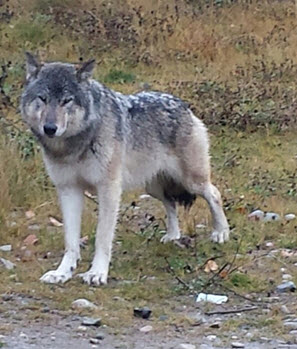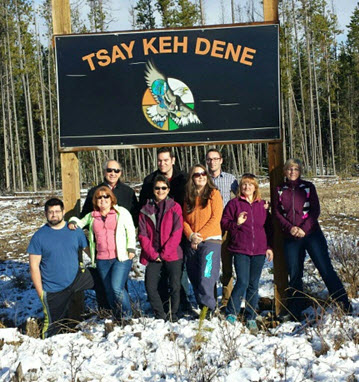Three times a year, in February, June and October, a circuit court travels to Kwadacha (formerly Fort Ware) and Tsay Keh, two of the most isolated communities in B.C.
Kwadacha is located at the confluence of the Elk, Kwadacha and Finlay Rivers in the Rocky Mountain trench and Tsay Keh is at the head of Williston Lake. When the Peace River was dammed by the W.A.C. Bennett dam the Tsay Keh Dene people were relocated twice - first, from Fort Grahame to Ingenika, and then in 1989 from Ingenika to Tsay Key. Given the history of Williston Lake and the negative impact on the Tsay Keh people, they refer to it as a reservoir. To them it represents the physical and emotional drowning of their traditional way of life.
On the Monday morning of court week a Provincial Court judge, lawyers, court clerks, sheriffs, adult and youth probation officers, a Native Court Worker, social worker and cook meet at the Prince George airport for a 570 km flight to Kwadacha. The court group stays in local housing, the White House in Kwadacha and the Multiplex and Sports apartment in Tsay Keh. They share mess hall meals prepared by the cook in a communal kitchen and everyone pitches in with cleanup.
Court sessions are held in the Band offices. The judge works without an office or cell service, although a land line and sporadic internet access are available through the Band office. Lying at 57 degrees north, the villages are connected only by air and forest service roads. In February the temperature can be -30. Layered clothing and a good pair of boots are the style even with judicial robes.
In Kwadacha Court starts Monday afternoon with a traditional smudging ceremony performed by a village elder. “Lake”, a full grown female wolf rescued as a cub 2½ years ago, usually visits while Court is in session. On Wednesday morning the court group travels by school bus to Tsay Keh where the Court sits until Friday noon, flying out in the afternoon.

Lake, the Kwadacha wolf
The two communities, each with about 275 people, are part of the Sekani and Athapaskan cultures. “Sekani” means, “People of the Mountain or Rock,” describing their final refuge after being pushed west by the plains Cree. The Sekani people’s traditional way of life was to live off the land by hunting, fishing, trapping and gathering vegetation. Forestry activity became a source of employment but declined due to the recession and the mountain pine beetle. Mining exploration has recently brought renewed activity to the region. Both First Nations have land and resource claims.
Both communities have been impacted by successive waves of resource development, relocation and residential schools. Availability and consistency of services to address social and alcohol problems is an ongoing problem. Each community has made an admirable commitment to restorative justice programs which are fully supported by the villages’ young chiefs. Kwadacha has a Restorative Justice Committee and one is being revived in Tsay Keh. In Kwadacha the Restorative Justice Program is called Khutsedzi k’ e’, meaning “in our ancestors’ footsteps”. Both communities have Community Justice Coordinators and wilderness wellness and healing camps. Sentences imposed by the judge may include court orders to attend a camp.
Judge Michael Gray, who conducted this circuit for several years, said “This is fascinating country with challenges of geography and community. It is a place at once troubling and yet with much pride of tradition, family and home.” Current circuit Judge Roderick Sutton reports that being part of this circuit is extremely rewarding. “I consider it a privilege to sit in Tsay Keh and Kwadacha”, he says.

Court personnel at Tsay Keh

